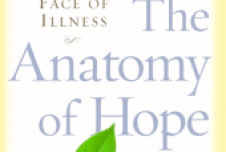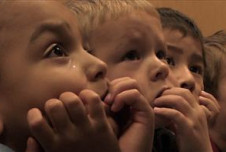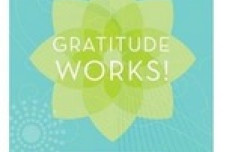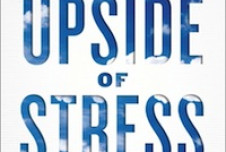“She’s just going to be a maid anyway.”
This was the reason given to me by a fifth grade teacher as to why I, a student teacher at the time, shouldn’t give extra help to a child who was working hard to improve her reading.
Once my shock at this disturbing statement wore off, I realized that the teacher’s beliefs and assumptions were potentially jeopardizing the quality of life and future aspirations of this student. Bar none, reading skills are essential to life. And while there is absolutely nothing wrong with domestic work, what if this student wanted to become a cancer researcher or an airline pilot or a Pixar animator?
As educators, the most important—and rewarding—part of our work is to recognize the vast potential within our students and to help them see it within themselves, and then support them in reaching that potential.
In other words, we need to help them cultivate hope.
What is hope?

Researchers have taken hope, a somewhat ephemeral concept, and made it practical.
Hope is about one’s ability to achieve goals. It has been linked to greater academic achievement, creativity, and problem-solving skills, as well as less depression and anxiety.
Hope requires two components: pathways and agency. A “pathway” is a roadmap to reaching a goal, one that is created by the student and that includes alternate routes when obstacles arise. “Agency” is the student’s belief, motivation, and confidence that they can achieve the goal.
While both pathways and agency are central to hope, new research being published soon by the journal Learning and Individual Differences suggests that agency might be the more critical part of the equation.
Dante Dixson and his co-authors found that “high hopers” (students high in agency and pathways) and “high agency thinkers” (students high in agency, but low in pathways) had better academic and psychological outcomes, including the belief about their chances of success in the future, when compared to “low hopers” (students low in agency and pathways) and “high pathway thinkers” (students high in pathways, but low in agency).
“Looking towards the future with positive expectations is a powerful force on the present as it affects present decisions, thoughts, and behaviors,” writes Dixson.
Thus, if students can cultivate agency—and, subsequently, hope—by believing in their potential success and examining how their current behaviors may affect their future, then they might engage more in school and persevere towards a more ambitious goal, especially when the road to that goal gets rocky.
Three ways to cultivate hope
While hope researchers have created a fantastic method for developing students’ pathway abilities (which I wrote about back in 2012), cultivating agency is a bit trickier because it involves a student’s history, beliefs, self-concept, and motivations. That’s a complex psychological mishmash, at best, but even so most people develop at least some sense of agency.
The key is to develop the student’s feeling of self-efficacy, or the belief that one can succeed in a task. According to Dixson, self-efficacy is the “can” phase of a task, whereas hope is the “will” phase. In other words, believing that one can accomplish a goal is vital to developing the will to do so.
“Looking towards the future with positive expectations is a powerful force on the present”
First and foremost, educators need to create an emotionally safe learning environment. Students’ desire and motivation to learn and succeed are increased when they feel safe to take risks, make mistakes, and just flat-out fail, with no fear of humiliation, shame, or other unlovely repercussions.
Research on self-efficacy suggests that building on past successes is central to believing in one’s ability to achieve in the future, as is seeing others around you succeed. However, some students may not have many accomplishments to pull upon, or they may be growing up in an environment or society where, due to circumstances beyond their control, opportunities are scarce, obstacles are abundant, and success feels elusive.
While there is no silver bullet that will solve all these challenges immediately, here are three research-based ideas for educators who view developing a student’s sense of agency as imperative to their work.
1. Become mindfully aware of what’s going on inside. In order to change our beliefs about ourselves, we have to first know what they are. But that’s the thorny thing about beliefs—we’re often not conscious of them or how they drive our choices and behaviors. This is where the practice of mindfulness can help.
According to Albert Bandura, the foremost expert on self-efficacy, people often rely on their physiological reaction to a situation or task to decide whether or not they are capable of handling it. For example, if a student experiences severe anxiety the night before giving a public speech, she may believe that she does not possess the ability to give the speech and, therefore, decide to be sick the next day.
The practice of mindfulness can help us observe that our bodies or emotions are telling us something is not quite right, which then allows us to describe what we are experiencing. Just naming the experience can help us act with awareness: We can more easily identify the underlying belief that is causing this reaction, choose not to believe it (because mindfulness teaches us that we are not our thoughts), and replace it with a more positive thought. At that point, we can consciously choose a more constructive action.
Indeed, researchers found that students who have a more mindful disposition—particularly those who can observe, describe, and act with awareness—have greater self-efficacy and, thus, bounce back from failure more easily.
2. Be gentle with yourself and change your narrative. Sometimes, though, it can be difficult to develop the “acting with awareness” phase of mindfulness. (To be frank, I have found it to be a never-ending journey, as life has an uncanny way of presenting us again and again with situations we’re not quite sure how to handle.)
And for those of us who have the habit of beating ourselves up when we make mistakes or fail at a task, cultivating this ability is particularly challenging. We may be able to notice that we’re anxious and name the emotion, but overcoming the habituated belief of “I am not capable and hence a loser and therefore will never succeed at anything” can take a lot more effort.
In that moment, if students can learn to practice self-compassion, speaking kindly to themselves and realizing that making mistakes is part of the human experience, then they may be more likely to alter their beliefs. Indeed, one study found that students who judged themselves had a weaker sense of self-efficacy, whereas self-compassionate students had more.
But it’s not enough to soothe yourself with kindness. Changing the underlying belief or narrative that caused the emotional upset is also required. In the same study that linked mindfulness to self-efficacy, the researchers found that positive reappraisal of a situation—a form of positive self-talk, a technique that hope researchers have discovered is used by “high hopers”—related to one’s ability to bounce back from failure.
Take the student who mindfully overcame her anxiety to give her speech. What if she still doesn’t do very well? Rather than getting overwhelmed with a feeling of failure, she might instead remind herself that many people fear public speaking more than death and that giving speeches takes practice—and then she might go easy on herself and pat herself on the back for actually doing it!
3. Check our own narratives about students. I’d like to think the fifth grade teacher I mentioned at the beginning would be horrified if she knew the potential impact of her statement on the student’s personal and academic life. After all, the relationship between educators and students is the heart of teaching—and research shows again and again the tremendous effect, both short- and long-term, this relationship has on students.
Yet it takes work to make what might be unconscious conscious, and to know what may be most helpful to students.
To start, educators should take note of whether they hold a deficit mindset about one or more of their students. In other words, is the focus on students’ weaknesses—or their strengths? But we need to go beyond thinking about just the student, and consider our beliefs within the larger socio-political context.
For example, Jeff Duncan-Andrade argues that when we believe all students can be successful if they just work hard enough—e.g., show grit or play by the rules—then we might not be acknowledging structural impediments to the success of marginalized students. This, writes Duncan-Andrade, “largely delegitimizes the pain that urban youth experience as a result of a persistently unequal society.”
Instead, Duncan-Andrade suggests that educators need to stand with the youth and the communities they serve, humanizing and sharing the burden of their despair and rage. More than that, teachers need to work against the ideology that privileges some over others.
“We cannot treat our students as ‘other people’s children,’” writes Duncan-Andrade. “Their pain is our pain.”
Every student deserves the chance and has the right to explore their glorious potential.
Helping our students to believe in themselves when perhaps no one else does and working with them to cultivate hope where seemingly there is none are two of the greatest gifts educators can offer to our youth.










Comments